In the first two parts, we described how trending technologies are changing the way in which the relationship between retailers and consumers can be less distant and more engaging. The full picture of the innovative landscape is not totally complete without describing how artificial intelligence (AI), machine learning (ML), AR/3D and fintech can step up into a superb experience and to a revenue engine for a future brand evaluation.
At strategic corporate level, ML and AI can assemble and analyse a huge number of customers, marketing & sales and product data that not only will improve business operations by enhancing demand forecasting and inventory optimisation, but also will elevate customer experiences through personalisation, a better merchandising planning and production and extracting insights to improve loyalty and to reduce churn. That is why many brands are working to innovate their tech infrastructure to speed up the change. These can also be able to predict trends in the creative fashion product design process through the analysis of the audience preferences.
Another side of this strong retail change is the innovation in fintech solutions that are frictionless and help marketing to target the offers.
Following the flourishing market of cryptocurrencies, a few brands started to offer the possibility to pay in crypto to offer more options of service.
At in-store level, some retailers opted for the introduction of mobile apps with no checkouts. This tech allows to reduce the flow in-store and make shopping faster. The smartphone must be scanned on entry and digital cameras then track where people are in the store and record which items they place in their bags. Payments are directly integrated with credit card details in the app. This payment integration tech is also available for scanning into some smart mirrors of the changing rooms.
Combinations of more technologies such as sensors, AI, CRM databases, and biometrics are the bases for the current and future integrated retail formats. These formats incorporate tech-enabled processes based on data analytics for store entry management, shelf-front customer recognition, customer behaviour information acquisition, shelf-front customer-directed promotion, and payment (exit) management. Biometrics technologies not yet employed massively, such as face recognition, fingerprints, veins and irises prints will spread soon in-store and used as payments systems at the check-out. The biometric-linked marketing systems can also work on targeted personalised offers and pricings in real-time on digital signage, mobile communications and, at another level, to process statistical behavioural and personal preferences data to optimise the visual merchandising, windows and stocks in the near future.
Although, at the moment, there is still the focus to think to react to the changes in travel retail. Since consumption overall switched to a local level, brands are concentrated to think about where consumers are physically, but also the best way to reach them. It comes as no surprise that where they immediately headed to was online. From shoppable live-streaming, augmented reality try-on tools, and branded virtual worlds, there has been no shortage of investment in marketing activities aimed at engaging consumers online. Equally, many brands have channelled their focus towards their customer relationship management programmes embracing the connection that technology enabled them to speak directly to their consumers through direct messaging, virtual store-visits and showrooms as well as private virtual events for exclusive customers.
Right now, offline personalisation can be implemented through technologies of artificial intelligence, ML and computer vision. Today the most widespread solutions allow identification of a person once they enter the store (or even earlier, through GPS or Wi-Fi in order to invite them to the closest store). After that step, all the information including purchase shows up on the consultants tablet and the client starts to receive personalised push-notifications with offers which, according to their search history or web search, might be interesting for them. In a decade’s time, store windows will become digital personalised space that will conform to the people passing by, take into account their emotions and reactions.
Online personalisation is strongly intertwined with usability: reliable trade sessions, adaptation of content and products on offer, marketing (where the prospects of online personalisation are very favourable) and individual pricing strategy. Access to the data of search history and behavioural analysis of this data give the opportunity to bring personalisation to a level of understanding the needs and wants of a client before they even realise those themselves, while different marketing channels – targeting, retargeting, e-mail/sms (and other) mailing lists will ensure delivery of information about a suitable product at the right time.
An example of this effort to make the product cross selling phase more efficient for a customer that is every day more demanding and fluid is offered by the omnichannel styling services. Ideal for multibrands or brands with a wide fashion offering to convert better, Bestlook is a customer-centric ML system and a method for product recommendation to deliver individualisation at scale. It is an AI-driven recommendation engine to improve the customer experience, solving all the pains through personalised garment recommendations, based on customer data input and empowered decision making using 150 data points of high-value variables to deliver individualisation at scale. This technology generates actionable insights that empower users, while anonymously allowing brands to understand the customer’s needs and preferences, creating an impactful change. It’s like a digital image consultant that matches personal data such as natural colouring, body shape, personal fashion style for every occasion and fitting.
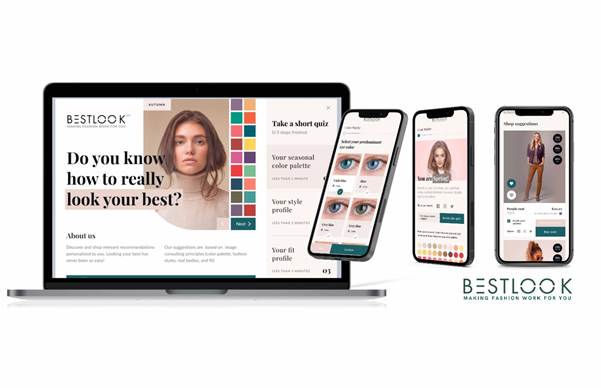
Why these technologies are a good investment for fashion and apparel brands?
They allow corporate cost savings in the long term, a better brand competitiveness and less environmental imprint worth to mention as the main reasons. Returns, due to unfit and the missing touch and feel of products, result in large amounts of cases. They are in fact a pain-point for retailers and e-commerce. Returns are an inconvenient problem in the apparel business, not only for the merchant but also for the customer. With an estimated return rate of 50 per cent in the fashion sector, the seller has to deal with the expense of restocking and possibly reprocessing, the buyer, who must reship the return, and the environmental impact which is estimated around an annual volume of 91 million tonnes. Morgan Stanley estimated that clothing returns amounted to $65 billion in 2019. Size differentiation between different brands make disappointed 88 per cent of customers.
The rise of a customised demand is the second factor. According to a research made by Deloitte, more than 50 per cent of consumers are willing to buy customised products as they are unhappy with the mass offering. Diversity is gaining traction and so it is the request for a better fitting, which can be no more based on national anthropocentric measurements or simply depending on brands models. SizeUK reports that more than 60 per cent of the English men had issues in finding clothes of the right size.
For this reason, the advancement in technology-based 3D, AI and ML solutions helped to generate a revolutionary approach in fashion measurent that can solve this issue through digital avatars and virtual try-ons. The most valuable resource for personalisation and customisation is data: behavioural, preferences, tastes, and, of course, physical measurements. How is it possible to determine physical measurements if most men do not even know their parameters and women often make mistakes measuring themselves (hips, waist, bust, leg height, arm length)?
Fitting and modelling technologies matches anthropometry, mathematics, statistics, ML, e-commerce, cloud computing and usability to develop solutions that relate, personalise and generate value for fashion brands. Virtual fitting rooms display size recommendation and how different garments or shoes fit to the customer. It is possible to visualise how different sizes fit on personal body measurements to make the right purchase decision.
Bigthinx.com offers an innovative approach. Its ‘Lyflike’ and ‘Lyfsize’ 3D body scans are cloud based solutions that help to determine all these parameters by two pictures uploaded from a smartphone, to calculate precise full-body measurements for an instant apparel size and fit matching from the e-commerce or a mobile app. These solutions can be deployed into e-commerce, apps, smart mirrors or tablets. Based on a huge dataset, a neural network determines all the measurements and creates the exact digital avatar of the customer. All the data collected, allows to see how the different sizes fit with a seamless personalisation of the user’s experience. With this tech adoption, a company can experience 70 per cent reduction in e-commerce returns, 20 per cent average increase in order values, 250 per cent greater sales conversions, increased engagement and brand loyalty, increased NPS, aggregated insights from human body data to improve entire supply chains.
Bigthinx’s AI technology employed in productivity tools can help brands optimise their entire supply chain. It helps merchandisers to make better planning, designers to prototype and design faster without compromising on quality, and gives to the brands the power to leverage human body data to manufacture more sustainably, distribute more efficiently, and reduce logistics costs. At store-level, it allows to make a more efficient management of the local warehouse, ordering from the central logistic point the products not available in-store.
From a consumer experience perspective, with personalised 3D avatars, consumers can learn quickly to shop with greater confidence, avoiding to order multiple product sizes, because they are better informed and can feel more connected to the brand. It also makes the shopping experience funnier. Beyond size recommendations and fit scores, animated avatars and mixing-and-matching give a sense of entertainment in addition to functional shopping. Customer engagement and loyalty are also vastly increased, when brands can easily transport their customers’ avatars digitally to any place where they can learn more about the concept behind the designs or heritage of a brand.
And as the world of fashion tech moves quickly and personalisation demand grows, Bigthinx has responded by offering virtual showcases as part of its product offering.
Virtual showrooms turn any website into an immersive, interactive and navigable 3D space, exactly as in the interior of a boutique, in which customers can delight in as they virtually tour the store, tap products, view the details and shop. It is an interactive experience rather than a one-sided exploration of displays. Any consumer can create their personalised avatar and explore a showroom in an interactive format which allows them to virtually try-on any clothing or make-up in the showroom. The personalisation and try-on experience transcends the current one-way interaction offered by virtual showrooms currently on the market.
Virtual showrooms usually increase the time spent on the brand’s e-commerce for a better conversion and increasing the probability of future purchases.
Virtual fashion shows and branded games complete Bigthinx’s product suite with breathtaking immersive virtual locations (for e.g. malls or boutiques or specific iconic or futuristic locations) and clothing displayed on engaging avatars walking the ramp to showcase designs at a fraction of the cost of physical fashion shows.
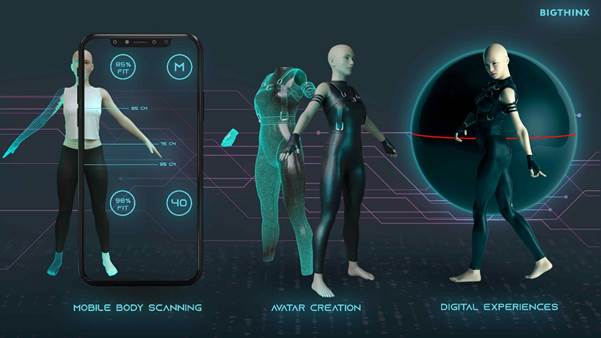 Avatar synthesis is a highly innovative and rapidly changing part of the media tech landscape. Creating avatars can enable users to build new personas for use in areas such as gaming, entertainment, advertising, and the upcoming metaverse.
Avatar synthesis is a highly innovative and rapidly changing part of the media tech landscape. Creating avatars can enable users to build new personas for use in areas such as gaming, entertainment, advertising, and the upcoming metaverse.
Thanks to AI, software is increasingly able to embody and mimic human behaviour, emotions, and intelligence. Looking ahead, the synthetic media landscape is on track to change everything we know about creating, receiving, and interacting with humans and AI. Fashion buyers seamlessly engage with avatars and adopt them as their non-biased fashion influencers.
The experience transcends buying products physically, by allowing the user to try on fashion products and see himself wearing the garment, getting instant recommendations and style advice, see how it would look in different places and locations, and tailoring its shopping experience. This is what hyper-personalisation is all about, and it’s enabled by 3D avatars.
Another very popular direction in which personalised avatars are relevant is in the creation of Non Fungible Tokens (NFT) whereby blockchain based collectibles can be created using the digital likenesses of celebrities, sportspersons, or anyone else. These are future-proof and sold directly by the owning party, allowing creators to monetise their own likenesses and collectors to own limited edition or one-of-a-kind pieces of art.
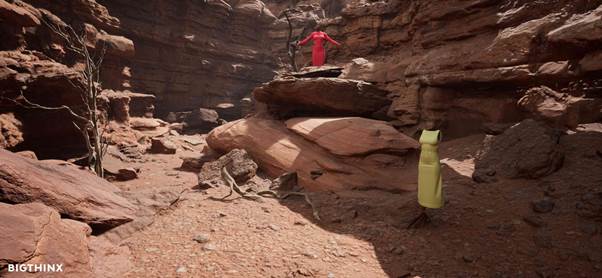 Recently, luxury brands such as Gucci, Balenciaga, Louis Vuitton have already welcomed the metaverse and launched their own games to appeal to a young consumer target that expects to feel free to express and entertain a co-creative relationship with fashion brands. Community-building is another factor that drives more loyalty to a brand. Gen-Z and Millennials targeting luxury brands know it well and they are investing in these new technologies to enhance their storytelling and to harvest their future consumers. Digital products can be seen also as a sustainable option to increase brand’s revenues in diversified categories. Last March, Gucci partnered with the augmented reality (AR) fashion platform Wanna to release Virtual 25: a pair of neon-coloured, digital-only sneakers that people could try on using augmented reality and “wear” in photographs for social media. To be worn by avatars in game, Virtual 25 marked the first time that the luxury Italian fashion house has designed a product that exists only in the virtual world (non NFT).
Recently, luxury brands such as Gucci, Balenciaga, Louis Vuitton have already welcomed the metaverse and launched their own games to appeal to a young consumer target that expects to feel free to express and entertain a co-creative relationship with fashion brands. Community-building is another factor that drives more loyalty to a brand. Gen-Z and Millennials targeting luxury brands know it well and they are investing in these new technologies to enhance their storytelling and to harvest their future consumers. Digital products can be seen also as a sustainable option to increase brand’s revenues in diversified categories. Last March, Gucci partnered with the augmented reality (AR) fashion platform Wanna to release Virtual 25: a pair of neon-coloured, digital-only sneakers that people could try on using augmented reality and “wear” in photographs for social media. To be worn by avatars in game, Virtual 25 marked the first time that the luxury Italian fashion house has designed a product that exists only in the virtual world (non NFT).
These virtual sneakers were available within either company’s mobile app for an affordable price between $9 and $12. Then the purchase on Gucci app unlocked an in-game downloadable version of the trainers to be worn by users’ avatars on the virtual reality social platform VRChat and online game Roblox.
3D and AR are definitely a game changer for omnichannel purchases and sales, because these technologies make the appeal of products higher with a better definition than the usual pictures, because it is an animated interactive experience. Among the 3D tech and hyper-personal immersive experiences, there are other two notable and successful companies that worth our attention: TriMirror.com and Threedium.co.uk.
The Canadian TriMirror offers a real-time cloth simulation and multi-platform 3D virtual fitting solution. TriMirror’s virtual fitting technology is uncompromising: accurate, real-time, 3D visualised, animated, beautiful and entertaining, and valuable to both shoppers and brands. TriMirror uses an instant solution that allows the try-on of real clothes on real-dimensioned avatar bodies, and which allows the user to see where the garment is tight or loose and how it behaves when they move around in various ways before purchasing.
Apart from mobile, e-commere and in-store, TriMirror has 3D Draper, a solution for fashion designers to let them design clothes both from scratch in 3D and by using CAD patterns created with third-party software. Immediately, two-dimensional patterns can be seen fitted onto different body sizes and shapes, draped and simulated in physically realistic ways, and animated in real-time with various motions to help judge how the particular fabric and garment fit and behave.
Threedium.co.uk applies creativity, 3D/AR technology to e-commerce, digital advertising, social media and more for an outstanding digital brand experience as well as personal shopping experience, to drive product considerations and deliver conversions. Their portfolio of solutions works on any device, e-commerce platform, browser, or CMS (incl Shopify, Wix, Wordpress, BigCommerce, Arcadier, Magento, SAP, etc) and the 3D Ads (via Google Swirl formats, Google AR Search, Amazon Advertising (programmatic DSP), most Ad Exchanges (like AdForm), or through direct publishing.
3D/AR content is a game changer sales driver, as it boosts customer engagement by 66 per cent over traditional 2D imagery. Studies have shown that the more a user interacts with a 3D display, the more they trust product as it has a better visibility, purchases can rise 40 per cent and product returns can be reduced by 35 per cent.
Threedium’s 3D configurators (for fashion, accessories and shoes) allow consumers to build their product on-demand, checking the different colours, shapes, the textures, details of craftsmanship and all the other available product options in real-time without ever losing sight of the product and with the ability to zoom in and out with rich rendering.
The 3D Product Explorer is like a simple virtual showroom, because the customer can interact directly with the product. With a 360 degrees view, customers can zoom in, out, rotate and better explore the complete brand’s offer with a range of designs, colours or materials at their fingertips. On the other hand, the brand can highlight entirely its proposition assets (for e.g. manufacturing: finished details, handmade craftsmanship, materials) and other elements such as real-time animations (open/close, body movement simulations, virtual hand) plus hotspots including texts, images or videos with interactive hotspots.The brands using these solution experienced an increase in conversion, they have doubled the time spent on the e-commerce and registered a significant decrease in returns.
Their Virtual Walkthrough experience is an immersive experience reproducing in detail a virtual showroom for an engaging discovery and shopping. It is the closest representation of products as they are, without physically standing in a store.
Threedium’s 3D viewer and AR experience can be a discovery touchpoint to start on the app or via e-commerce through a QR code as a virtual try-on for bags & accessories, shoes and clothing.
3D Ads AR tech serves as a stunning vehicle for the audience attention to target prospects in the awareness, engagement and consideration phases. They are suitable for desktop and mobile, helping effectively to customise the look and feel of each product page so that it fits seamlessly into website design, making sure that every detail is perfect for consumers shopping online.
The Web3D AR tech supports effectively the User Experience in the pre-purchase phase and it is frictionless in redirecting to the product detail page. Also, the integration is seamless (no app is required) for an omnichannel experience (instore and online). Mobile and desktop devices are supported and the tech features available can include 3D/AR view, animation, hotspots (with text, video, images), QR codes, colour/material configurations, sustainability materials, real-time engraving.
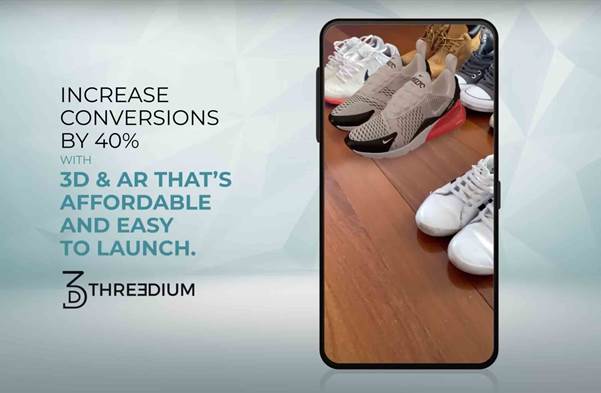 The journey in retail tech will evolve continuously. That is why it is important to understand now their potential as soon as possible. These technologies make the brand promotion and sales growth much more easier for emerging D2C brands, and secure competitiveness to the existing local business or retailers with low physical traffic or looking to develop their online sales channel.
The journey in retail tech will evolve continuously. That is why it is important to understand now their potential as soon as possible. These technologies make the brand promotion and sales growth much more easier for emerging D2C brands, and secure competitiveness to the existing local business or retailers with low physical traffic or looking to develop their online sales channel.



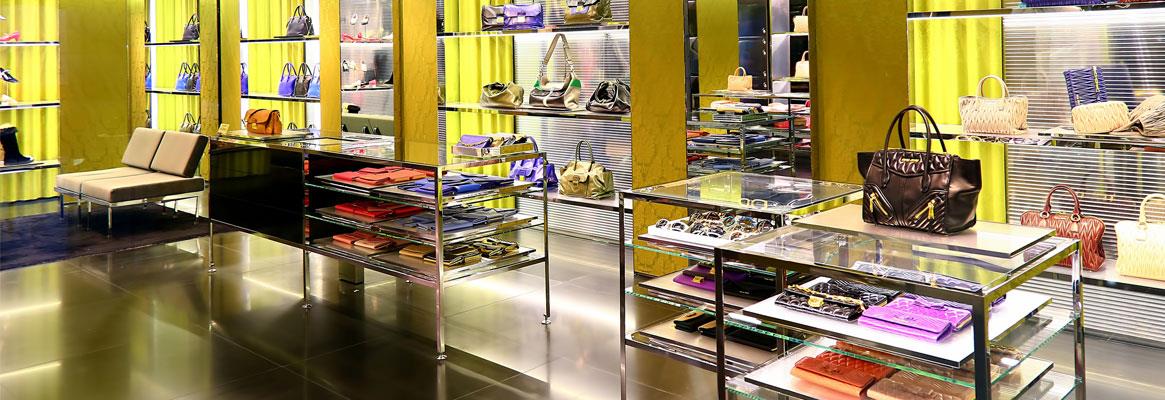




Comments